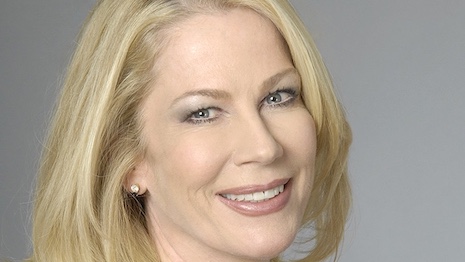 Shelagh Stoneham is a marketing and branding expert and former CMO of Fortune 500 brands
Shelagh Stoneham is a marketing and branding expert and former CMO of Fortune 500 brands
Luxury marketers and retailers are facing turbulent times with a new generation of wealthy customers embracing an enlightened set of values: reduce, reuse and recycle.
Recycle: The second-hand luxury market
The luxury accessories market was once the bastion of the wealthy.
Beautifully crafted goods made from the finest materials were worn and then replaced as something else caught their eye. Little thought being given to those bags in the back of the wardrobe.
Now the next generation of luxury shoppers are selling their gently worn goods. What was one woman’s last season’s bag has now become a treasure for those who could not or would not pay full retail.
In fact, for some, it has recently become fashionable and part of their social conscience to reduce their carbon footprint.
This trend has included a spotlight on private jets and car emissions and is now breathing a second life into luxury goods.
So rather than buy a lesser quality product new, the luxury aspirational shopper is basking in the joy of luxury “nearly new.”
With this growing trend, luxury consignment stores have become are a public secret and a thriving business.
Now anyone can discretely – or proudly – access high-end merchandise through luxury online consignment shops such as The RealReal, which raised $300 million in an initial public offering last May.
Bain & Company pegged the second-hand luxury goods market at $25 billion in sales in 2018.
ThredUp, the largest online consignment and thrift store, projects that the second-hand retail market will outgrow fast-fashion by 2028.
Reuse: Extending the life of luxury goods
Consumers are increasingly looking to extend the life of their luxury goods and finding it frustrating to secure high quality repairs.
Knowing this, British department store chain Harvey Nichols partnered with The Restory to offer after-care service for luxury goods, allowing customers to bring in items for refurbishment.
After a successful trial in its Knightsbridge store in London, the program will roll out across the United Kingdom to Harvey Nichols in Edinburgh, Leeds, Manchester, Birmingham and Bristol.
The Revival Package, a bundle of competitively priced services for wear-and-tear, will offer two options, one designed for the needs of shoes and the other created for bags, which will be exclusively available to be purchased alongside a new pair shoes or bag at Harvey Nichols.
The package is activated at the point of purchase and is available for 18 months to the specific item to which it is registered. The client is then able to redeem this service directly with The Restory or by dropping off at a Harvey Nichols store anywhere in the U.K.
Reduce: Next-gen wealth value and values
There is no shortage of those who can afford luxuries. Those who can afford them have more money to spend than every before.
Capgemini, in its World Wealth Report 2018, reported global high-net-worth-individual wealth rose 10.6 percent in 2017 to surpass $70 trillion, the first time it has reached this level and following six consecutive years of wealth gains.
The sobering aspect is the new attitude of the next-generation wealthy. They tend to value experiences over material goods and yet still hate to be seen in the same outfit twice.
Case in point: Toronto-based Yana Brikker has been working as an image consultant and stylist for a range of clients who include women and men, and she predicts that the clothing rental business will be taking Canada by storm as clients request such services. She also explained how the phenomenon could result in consumers not actually buying clothing if they want to only be seen once in a particular garment.
Many consumers have found a way to reduce their purchases through fashion rentals and vintage shopping.
“Last year Neiman Marcus in San Francisco were quick to jump on the trend by launching a 3,000-square-foot pop-up location for Rent the Runway, which was followed by a permanent storefront for Rent the Runway,” a report from Retail Insider said.
So, what is a luxury brand to do to maintain aggressive revenue targets? A couple of thoughts for consideration:
Build direct relationships
Savvy brands are building direct relationships with their customers as many are starting to do in Canada by building their own freestanding stores.
Christian Louboutin and Burberry are the most recent luxury boutiques to join Chanel, Prada, Escada, Boss and others in Toronto’s upscale Yorkville district.
Direct relationships are also being built through ecommerce and digital efforts as Gucci has recently done so well. This appears to be a good investment as “luxury brands will be challenged to focus on the human aspect of the digital revolution, as they seek to find traction with the younger, digitally-powered consumers that have come with it,” according to Forbes.
Keep customers active within the brand ecosystem
Own the full cycle of the customer relationship with the brand. Give customers another reason to return to your store by offering repair and restoration service.
Consider offering a Rent the Runway-type experience and sell gentle used items as per The RealReal.
These services are doing well because they are clearly fulfilling an unmet need.
If luxury brands themselves were to offer the services, they would create another point of interaction with existing or target customers, another reason to keep them in the brand ecosystem, another opportunity to sell and another way to build a relationship with the new generation of luxury shoppers based on shared values.
Shelagh Stoneham is a Toronto-based marketing and branding expert, international keynote speaker and retail and technology strategic growth advisor. She has served as the chief marketing officer for several Fortune 500 companies in North America and currently serves as a director on the board of the Global Retail Marketing Association.
